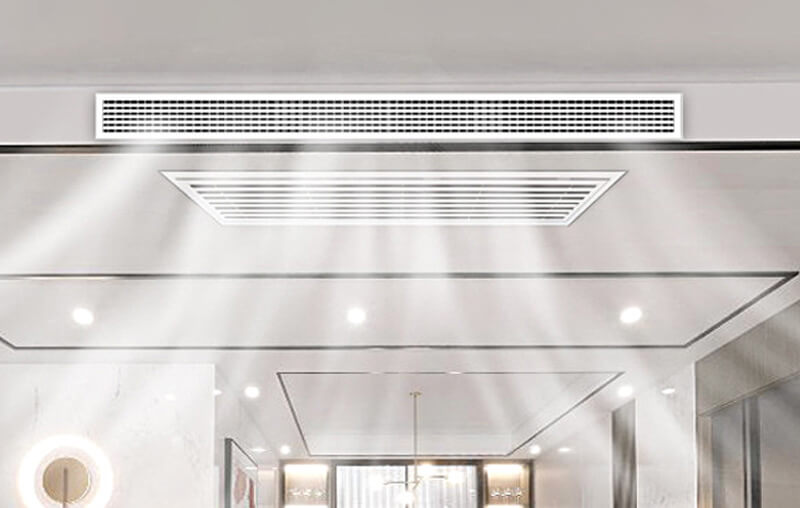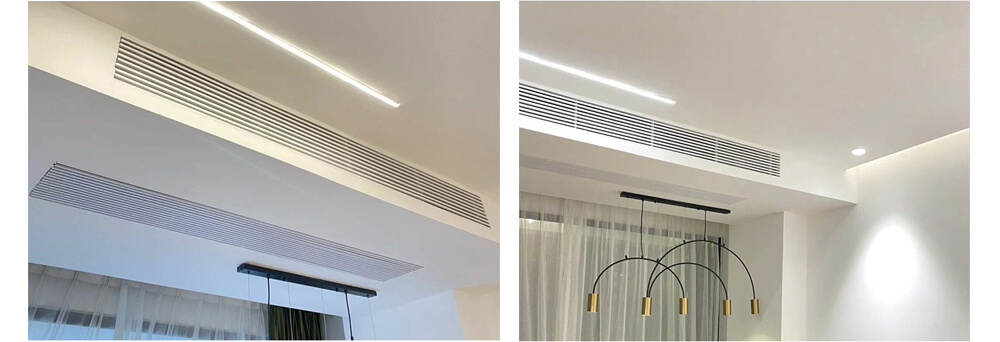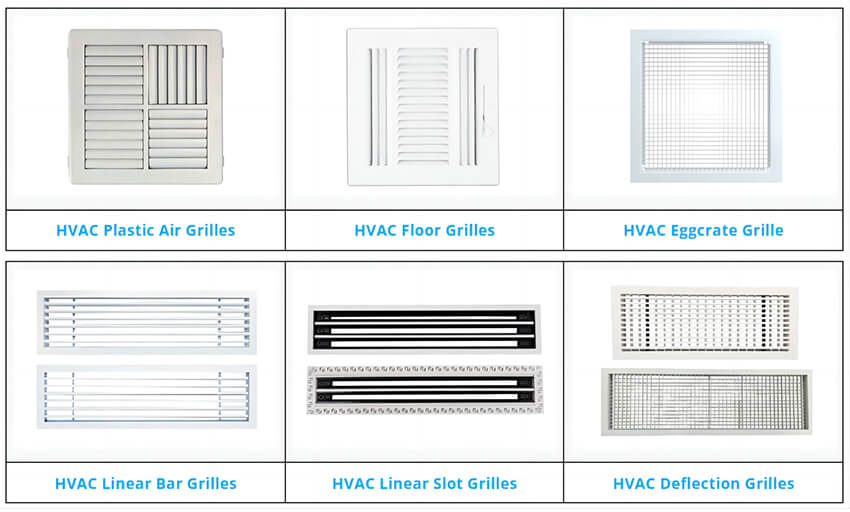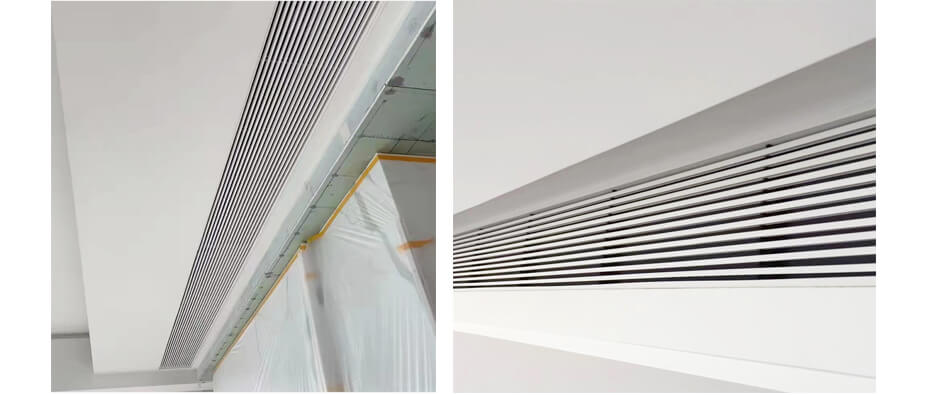Proper airflow is crucial for the optimal functioning of HVAC systems, affecting everything from energy efficiency to air quality. Regular air flow testing helps identify potential problems, preventing costly repairs and prolonging system life. This article will provide a thorough understanding of airflow testing, from its importance to the methodology and interpretation of results.
Ensuring System Efficiency and Longevity
- Optimizing Performance:
- Detecting Air Flow Inconsistencies: Air flow testing can reveal areas where airflow is impeded, leading to inefficient system performance and higher energy costs.
- Preventing System Deterioration: Consistent airflow ensures less strain on HVAC components, thereby extending their lifespan.
Impact on Indoor Air Quality and Comfort
- Creating Healthier Environments:
- Removing Contaminants: Effective air flow is crucial in removing and diluting indoor pollutants, directly impacting the health and comfort of occupants.
- Regulating Temperature and Humidity: Proper airflow contributes to maintaining balanced indoor temperatures and humidity levels, essential for comfortable living and working environments.
Basic Principles of Air Flow
- The Mechanics of Air Movement:
- Air Flow Path: Understand how air moves through an HVAC system, from intake to distribution and eventual exhaust.
- Pressure and Volume Relationships: Comprehend how pressure differences and ductwork volume affect air flow rates and patterns.
Factors Affecting Air Flow in HVAC
- Identifying Key Influencers:
- Ductwork Design and Condition: The size, shape, and condition of ductwork can significantly impact airflow efficiency.
- System Size and Configuration: The capacity and configuration of the HVAC system need to align with the space requirements for optimal airflow.
- External Factors: Consider external factors like building layout, occupancy, and even weather conditions that can influence airflow dynamics.
Laying the Foundation for Effective Testing
With a solid understanding of airflow principles and the factors that influence them, you are better prepared to conduct meaningful air flow testing and interpret the results accurately.

Preparing for Air Flow Testing
Proper preparation is crucial for conducting successful airflow testing in HVAC systems. This section outlines the steps and considerations needed to prepare for airflow testing, ensuring that the process is carried out effectively and safely.
Gathering Essential Tools and Instruments
- Equipping Yourself for the Task:
- Key Tools for Air Flow Measurement: Prepare necessary tools such as an anemometer, flow hood, and manometer. Each of these instruments plays a vital role in measuring different aspects of airflow.
- Supporting Equipment: Additional tools like a ladder, flashlight, and safety gear (like gloves and protective eyewear) may also be required.
Conducting Pre-Test Checks and Safety Considerations
- Ensuring a Safe and Ready Environment:
- System Inspection: Perform a preliminary inspection of the HVAC system, looking for any visible signs of damage, blockage, or wear that could affect testing.
- Safety First: Prioritize safety by ensuring all electrical systems are safely accessible and that there’s no risk of electrical hazards or falls during the testing.
Establishing a Baseline for System Performance
- Understanding Normal Operation:
- Recording Baseline Readings: Before making any adjustments or starting the test, record baseline readings of your system’s current performance. This includes noting standard airflow rates, temperatures, and system pressures.
- Documenting System Settings: Keep a record of the current settings of your HVAC system, including thermostat settings, damper positions, and any other relevant operational details.
Preparation: The Key to Accurate Air Flow Testing
Thorough preparation is essential for accurate and efficient airflow testing. By having the right tools at hand and ensuring a safe environment, you can confidently proceed with testing, knowing that your results will be reliable and informative.
Step-by-Step Guide to Conducting Air Flow Testing
Let’s take a look at a video for reference:
Accurately measuring airflow in an HVAC system is key to diagnosing and maintaining optimal performance. This section offers a detailed, step-by-step guide to conducting air flow testing effectively.
Initial Setup for Testing
- Preparing for Accurate Measurements:
- Turn Off Unnecessary Equipment: Ensure that all non-essential systems or equipment that could affect air flow, like exhaust fans or secondary HVAC units, are turned off.
- Set the HVAC System to Test Mode: If available, set your HVAC system to a test mode that maintains consistent fan speed and operation, ideal for testing.
Measuring Air Flow at Different Points
- Comprehensive Assessment of the System:
- Return Air Measurements: Start by measuring the airflow at return vents to assess how much air is being pulled into the system.
- Supply Air Measurements: Measure the airflow at different supply registers throughout the space to gauge how evenly air is being distributed.
- Main Duct Measurements: For a more thorough assessment, measure airflow in the main supply and return ducts.
Using Air Flow Measurement Tools
- Effective Utilization of Instruments:
- Anemometer Usage: Use an anemometer to measure air speed at different vents and registers. Ensure it’s held steadily and captures a representative airflow reading.
- Flow Hood for Register Measurements: A flow hood can provide a more accurate measurement at supply registers by capturing all the air flowing out of a vent.
Interpreting the Readings
- Understanding What the Data Indicates:
- Comparing to Standard Rates: Compare your readings to the standard or recommended air flow rates for your specific HVAC system.
- Identifying Variations: Look for significant differences in air flow between different areas, which can indicate issues like duct leaks or blockages.
Documenting and Analyzing Results
- Record for Future Reference:
- Detailed Documentation: Keep a detailed record of all measurements, including the location and conditions of each reading.
- Analyzing Patterns: Analyze the data for any patterns or anomalies that could suggest areas for improvement or repair in the system.
Mastering the Art of Air Flow Testing
By following these steps, you can conduct thorough and accurate airflow testing in your HVAC system. This process is crucial for ensuring that your system operates efficiently and effectively, providing comfortable and healthy indoor environments.
Analyzing Test Results
After conducting air flow tests in your HVAC system, the next crucial step is analyzing the results. This analysis can reveal much about your system’s health and efficiency.
Understanding Your Data
- Interpreting the Numbers:
- Comparing to Benchmarks: Assess how your readings compare to manufacturer specifications or industry standards. Deviations can indicate potential issues.
- Identifying Patterns: Look for patterns, such as consistently low airflow in certain areas, which could point to specific problems like duct leaks or blockages.
Assessing System Performance
- Evaluating Overall Efficiency:
- System Consistency: Consistent airflow across all test points typically indicates a well-functioning system.
- Variations and Anomalies: Significant variations can suggest issues in ductwork, system balance, or mechanical faults.

Troubleshooting Based on Air Flow Test Outcomes
Using the insights gained from airflow testing, you can troubleshoot and resolve various HVAC issues.
Common Air Flow Problems and Solutions
- Resolving Identified Issues:
- Duct Leakage: If leaks are detected, seal ducts using appropriate materials like mastic sealant or metal tape.
- Blocked Vents: Ensure all vents are clear from obstructions to improve airflow distribution.
When to Seek Professional Assistance
- Recognizing Limitations:
- Complex Issues: If the problems identified are beyond basic fixes, or if system modifications are needed, consult with an HVAC professional.
Best Practices for Maintaining Optimal Air Flow
Maintaining optimal airflow in your HVAC system is key to its efficiency and longevity.
Regular Maintenance and Inspections
- Proactive HVAC Care:
- Routine Cleaning: Regularly clean vents and replace filters to maintain unobstructed airflow.
- Professional Inspections: Schedule annual HVAC inspections to identify and address any potential air flow issues.
System Upgrades and Improvements
- Enhancing System Performance:
- Ductwork Upgrades: Consider upgrading ductwork for better air distribution, especially in older systems.
- Technology Advancements: Stay informed about newer HVAC technologies that can improve airflow and system efficiency.
Advanced Considerations in Air Flow Testing
For those looking to deepen their understanding of HVAC systems, here are some advanced considerations.
Utilizing Advanced Diagnostic Tools
- Cutting-Edge Testing Equipment:
- Smart Sensors and Monitors: Implement smart sensors that continuously monitor airflow and system performance.
- Thermal Imaging: Use thermal imaging to visually identify airflow issues, leaks, or insulation problems.
Integrating Smart HVAC Technologies
- Embracing Modern Solutions:
- Automated Systems: Explore automated systems that adjust airflow based on real-time data for optimal efficiency.
- AI and Predictive Maintenance: Consider systems that use artificial intelligence for predictive maintenance and airflow management.
Elevating HVAC Air Flow Testing and Maintenance
By incorporating these advanced testing methods and technological advancements, you can significantly improve the efficiency and effectiveness of your HVAC system, ensuring a comfortable and healthy indoor environment.

Conclusion
As we wrap up our comprehensive guide on HVAC air flow testing, it’s clear that this process is a critical component in maintaining and optimizing HVAC systems. This conclusion highlights the key takeaways and reiterates the importance of effective airflow testing.
The Integral Role of Air Flow Testing in HVAC Health
- A Foundation for System Efficiency:
- Essential for System Longevity and Performance: Regular and accurate airflow testing is fundamental in ensuring that your HVAC system operates efficiently, saves energy, and provides a comfortable indoor environment.
- Preventative Measure Against System Failures: Consistent testing helps in the early detection of issues, potentially saving time and resources on future repairs.
Reflecting on the Testing Process
- Gaining Valuable Insights:
- Skills and Knowledge Acquired: Through this guide, you’ve gained the skills necessary to conduct thorough airflow testing and interpret the results to maintain your HVAC system effectively.
- Empowering Proactive Maintenance: The knowledge and techniques shared here empower you to take proactive steps in ensuring your HVAC system’s optimal performance.
Encouragement for Ongoing Engagement
- Maintaining a High-Performance HVAC System:
- Commitment to Regular Testing: We encourage a commitment to regular air flow testing as part of your ongoing HVAC maintenance routine.
- Staying Informed and Up-to-Date: Continually educating yourself about new HVAC technologies and maintenance practices will further enhance your ability to maintain a high-performing HVAC system.
Closing Thoughts on HVAC Air Flow Testing
Understanding and implementing HVAC airflow testing is a vital practice that goes beyond routine maintenance. It is a proactive approach to ensuring the health and efficiency of your HVAC system, contributing to a more sustainable and comfortable living or working environment.
FAQs: Mastering HVAC Air Flow Testing
Q1: How Often Should HVAC Air Flow Testing Be Conducted?
A1: Frequency of Air Flow Testing:
- Routine Schedule: Ideally, HVAC air flow testing should be conducted annually as part of regular system maintenance. However, more frequent testing may be necessary in commercial settings or if issues are suspected.
Q2: Can I Perform Air Flow Testing Myself, or Should I Hire a Professional?
A2: DIY vs. Professional Air Flow Testing:
- Assessing Skill Level: Basic air flow testing can often be performed by homeowners using simple tools. For more complex systems or detailed diagnostics, however, it’s recommended to enlist the services of an HVAC professional.
Q3: What Are the Most Common Issues Detected by Air Flow Testing?
A3: Identifying Common HVAC Issues:
- Typical Problems: Air flow testing commonly reveals issues such as duct leaks, blockages, imbalanced airflow, and inefficient system operation.
Q4: What Tools Are Essential for Conducting Air Flow Testing?
A4: Tools Required for Air Flow Testing:
- Basic Instrumentation: Essential tools include an anemometer for measuring airspeed, a flow hood for capturing air flow from vents, and a manometer for measuring pressure differences.
Q5: What Should I Do If My Air Flow Test Results Are Poor?
A5: Addressing Poor Air Flow Test Outcomes:
- Next Steps: If air flow test results indicate problems, investigate potential causes such as blocked ducts or filters, leaks, or mechanical issues. Depending on the complexity, this may require professional assessment and repair.

If you want to know more, please click below:
- HVAC Linear Slot Diffusers – The Ultimate Guide
- HVAC Egg Crate Diffuser – The Ultimate Guide
- HVAC Jet Nozzle Diffuser – The Ultimate Guide
- HVAC Linear Bar Grilles – The Ultimate Guide
- HVAC Air Swirl Diffusers – The Ultimate Guide
- HVAC Round Ceiling Diffusers – The Ultimate Guide
- Round Ceiling Diffusers – The Ultimate Guide
- HVAC Return Air Grille – The Ultimate Guide
- Exhaust Air Louver – The Ultimate Guide
- HVAC Registers – The Ultimate Guide


